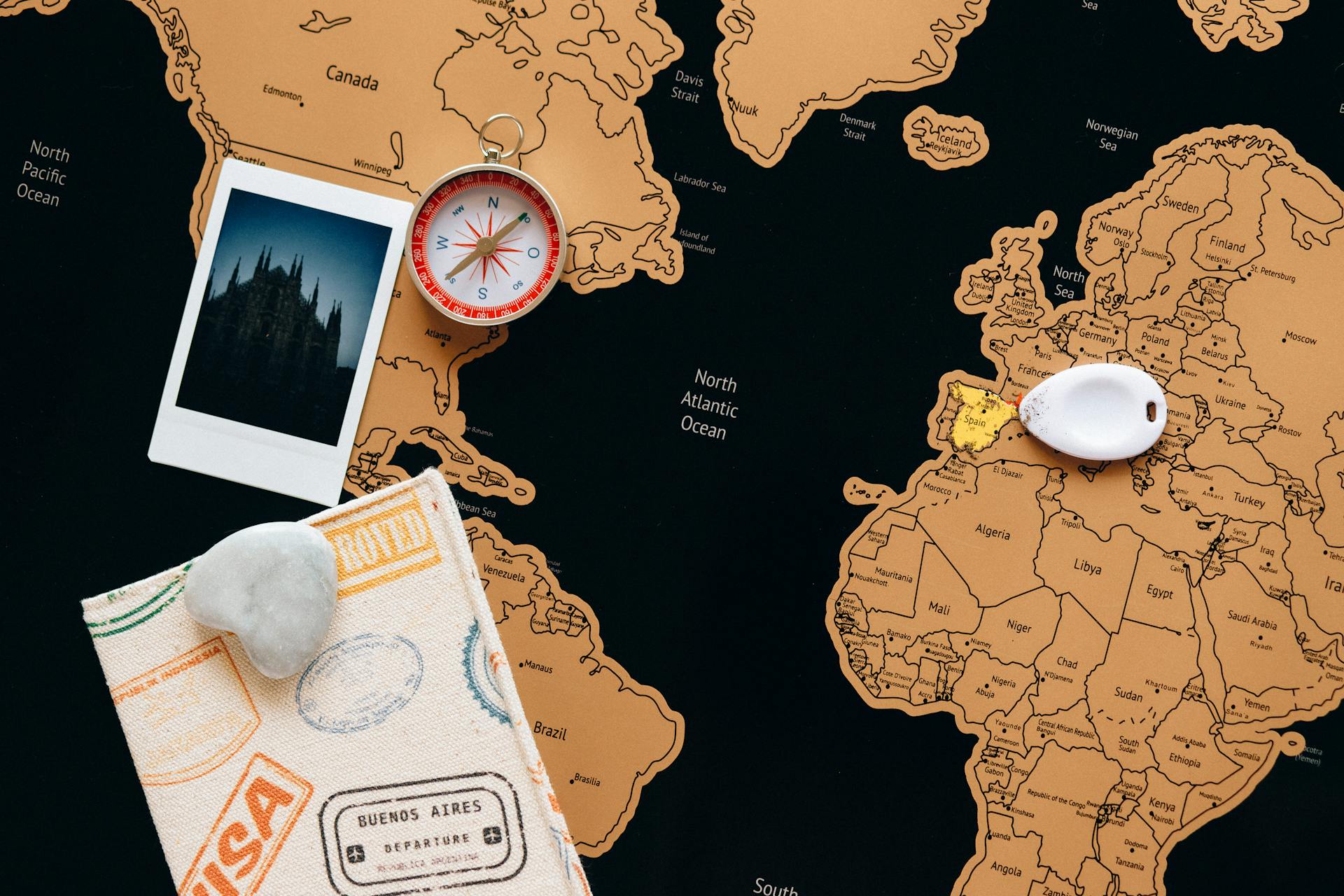
To use search grid coordinates effectively, you need to understand the basics of how they work. Search grid coordinates are a way to pinpoint a location on a map, using a combination of rows and columns to identify a specific spot.
Using the right scale is crucial when working with search grid coordinates. A larger scale will give you a more detailed view of the area, but it may not be as useful for larger areas. For example, a scale of 1:10,000 is great for detailed work, but a scale of 1:50,000 is better for covering larger areas.
To accurately locate a point, you need to match the grid coordinates to the corresponding map. This requires a clear understanding of the grid system and how it relates to the map.
Understanding Coordinates
Latitude and longitude are the building blocks of geographic coordinates, allowing us to pinpoint any location on Earth with two numbers.
These coordinates are based on a grid system, with latitude lines running east to west and longitude lines running north to south. The equator serves as 0° latitude, while the Prime Meridian serves as 0° longitude.
By combining latitude and longitude, we can indicate exactly where we are anywhere in the world. For example, New York City's coordinates are 40.7128, -74.0060 in decimal degree (DD) format.
You can think of latitude and longitude like a coordinate plane, where you move along the X axis (longitude) and then the Y axis (latitude) to find a specific point.
The values for longitude can range from –180 to 180, with the Prime Meridian as 0°. You can also use E (East) and W (West) notation to indicate the position relative to the Prime Meridian.
Latitude values range from –90 to 90, with the equator as 0°. You can use N (North) and S (South) notation to show the position relative to the equator.
Here's a quick reference for the different notations:
What Are Lat/Long?
Latitude and longitude are part of a coordinate system that allows any location on Earth to be specified by two numbers. They make up the most common geographic coordinate system currently in use today.
The system utilizes two sets of lines: latitude, which runs east to west, and longitude, which runs north to south. The equator serves as 0° latitude, with the North Pole at 90° N and the South Pole at 90° S.
Latitude values can range from –90 to 90 and are often written using N (North) and S (South) notation to show their position relative to the Equator. Longitude values can range from –180 to 180 and may also be written using E (East) and W (West) notation to show their position relative to the Prime Meridian.
By indicating both your latitude and longitude, you can pinpoint exactly where you are anywhere in the world. For example, New York City's coordinates are 40.7128, -74.0060.
Here's a quick reference guide to the notation:
These coordinates can be expressed in different formats, such as decimal degree (DD) or degrees, minutes, and seconds (DMS).
OlC
OLC is an alternative to geographical coordinates that you can use to search for locations on Mapy.cz. You can find the OLC of a desired location at https://plus.codes/.
The OLC is a unique code that represents a specific area. For example, the OLC "9F2P3CC2+C83" is a search entry you can use on Mapy.cz.
You can use OLC to search for locations without knowing the geographical coordinates. This can be helpful if you don't have access to a GPS device or if you're not familiar with coordinate systems.
To use OLC, simply enter the code into the search bar on Mapy.cz and the website will display the location on the map.
Reading a US National Grid Spatial Address
A US National Grid spatial address is made up of 12 digits, including a 5-digit Easting and a 7-digit Northing.
The Easting is the number of meters east of the central meridian, which is the vertical line that runs through the middle of the grid.
The Northing is the number of meters north of the equator.
In the US National Grid, the Easting and Northing are separated by a slash.
Finding Places
Finding Places is a breeze once you know how to use lines of latitude and longitude. You can find places using coordinates just like you would on a coordinate plane by first moving along the X axis, then moving along the Y axis.
To find a place, open MapMaker and click Open map, then type Latitudes and Longitudes in the search bar. The Latitudes and Longitudes map opens, showing a grid created by lines of latitude and longitude.
Lines of longitude (the X coordinate) can have values from –180 to 180, and lines of latitude (the Y coordinate) can have values from –90 to 90. You can use these values to find a specific place on the map.
For example, the North Pole is at 90 degrees latitude, or 90N. To find a place like (120E, 30N), move your cursor along the Equator until you find 120E, then move your cursor north until you find 30N.
You can also find coordinates for a place using tools like MapMaker. To do this, click Measure on the toolbar, choose Measure, and click the map pin button. Then, move your cursor over the map to see the X,Y coordinates change.
Once you've placed a point on the map, the coordinates don't change if you move your mouse. You can copy these coordinates, convert them to other formats, and more.
Here's a quick reference guide to help you find places using lines of latitude and longitude:
GIS and Mapping Tools
Maptive is a powerful tool for visualizing and analyzing grid coordinates. It allows you to upload your coordinates from a spreadsheet or enter them manually, and then view them on a map.
You can customize your map with various tools and options, including color-coding pins to segregate different locations and using the boundary tool to determine zip codes, districts, or cities.
Maptive also provides a filter tool to help you find specific information, and you can include additional data points that are displayed when you click on a pin.
GIS for Secondary Students
Learning GIS as a secondary student is a great way to develop spatial reasoning and problem-solving skills. You can start by working with ArcGIS Online to interact with GIS maps and explore real-world problems.
ArcGIS Online is a powerful tool that allows you to create and share maps, making it an excellent platform for learning GIS concepts. The basics of GIS can be learned through hands-on experience with ArcGIS Online.
To become a GIS professional, you'll need to develop strong skills in areas like data analysis, spatial reasoning, and problem-solving. Workers use GIS to analyze and interpret spatial data, making informed decisions based on that data.
You can tell a story using GIS by creating maps that showcase data and trends, making it easier to understand complex information. This skill is essential for communicating ideas and findings effectively.
Maptive
Maptive is a powerful tool for mapping coordinates. You can enter your map coordinates or upload them from a spreadsheet.
To get started, click on the "Data" tab and enter your latitude and longitude in two separate columns. Make sure to use either DD or DMS formats.
Once you've got your data set up, you can click "Map" to view your coordinates on a map. This is similar to using Google Maps.
One of the great things about Maptive is the number of customization options it offers. You can color-code pins to segregate different locations, which can be really helpful for organization.
The boundary tool is another useful feature that lets you determine what zip code, district, or city a location is in. This can be a big time-saver if you're trying to analyze a large dataset.
You can also include additional data points with your coordinates, which will be displayed when you click the corresponding pin on the map. Using the filter tool, you can decide which data points to show at any time.
Maptive even has a geocoding feature that lets you find map coordinates for an address. This is really convenient if you're working with addresses and need to convert them to coordinates.
Your data is transferred securely using encrypted https, which gives you peace of mind when working with sensitive information.
Frequently Asked Questions
Can you search grid coordinates on Google Maps?
Yes, you can search grid coordinates on Google Maps by entering them in the search box in decimal degrees (DD) or degrees, minutes, and seconds (DMS) format. Simply type in your coordinates, such as 41.40338, 2.17403 or 41°24'12.2"N 2°10'26.5"E, to find the location.
Where can I search coordinates?
To find coordinates on Google Maps, tap the search box after dropping a red pin on an unlabeled area of the map.
Featured Images: pexels.com


